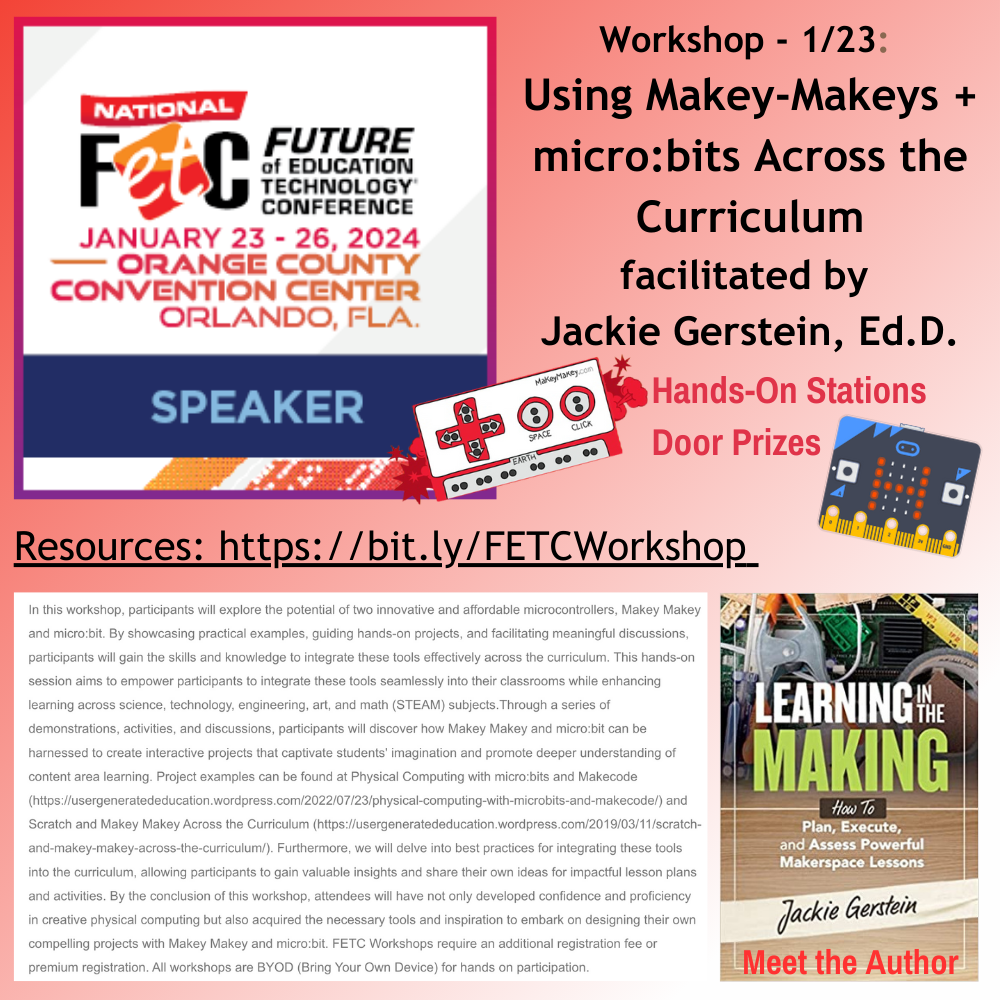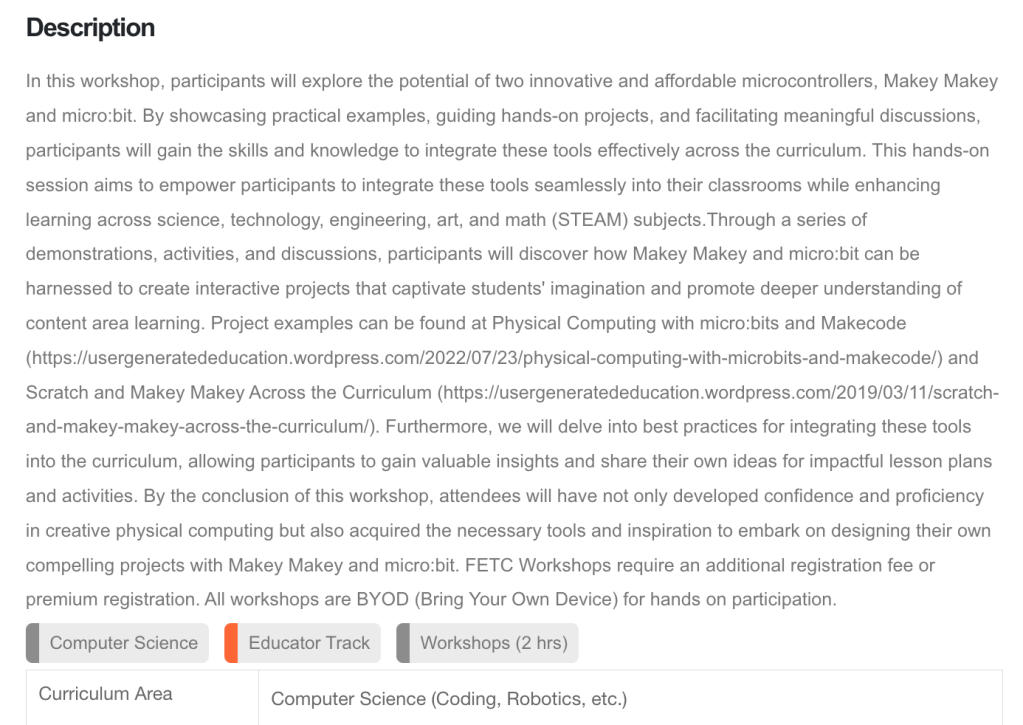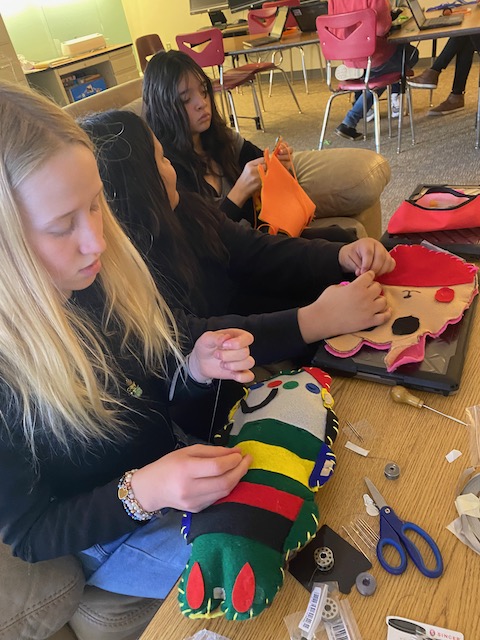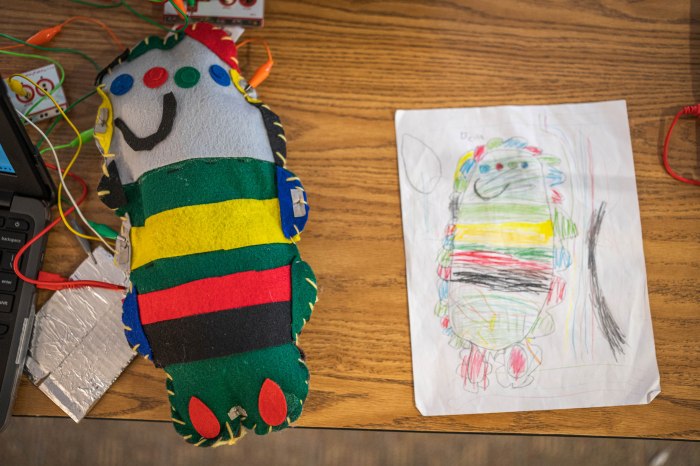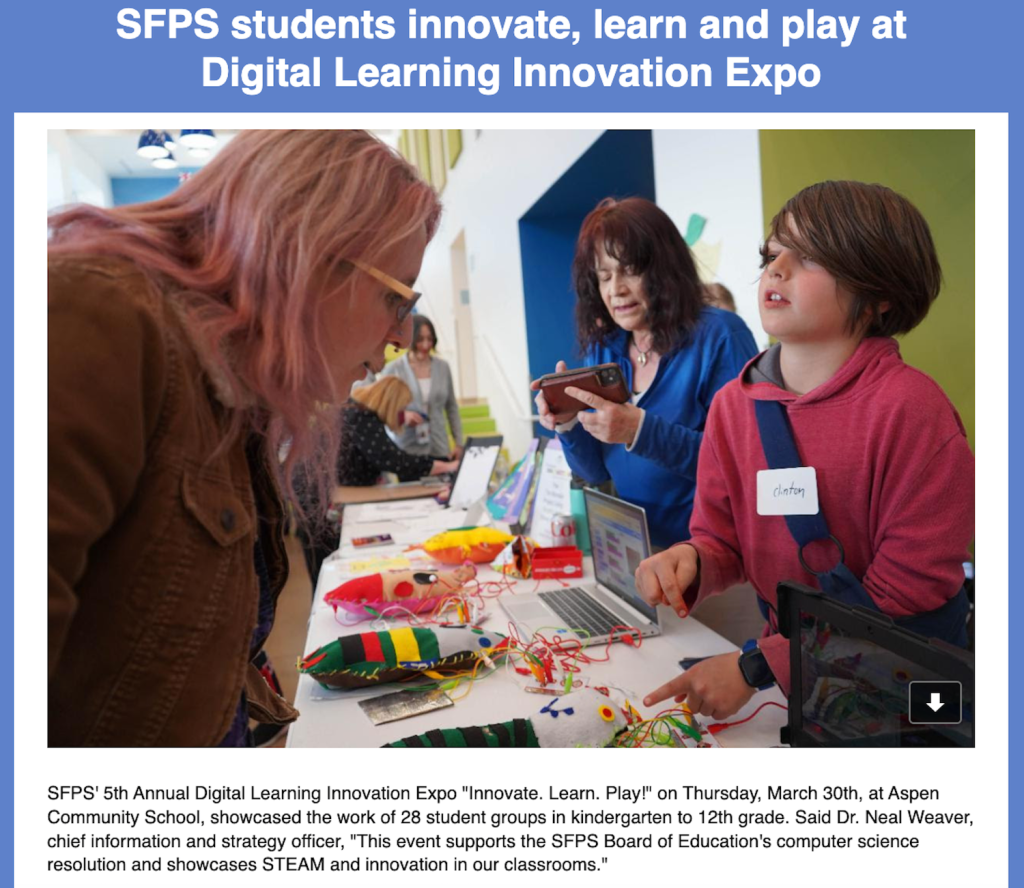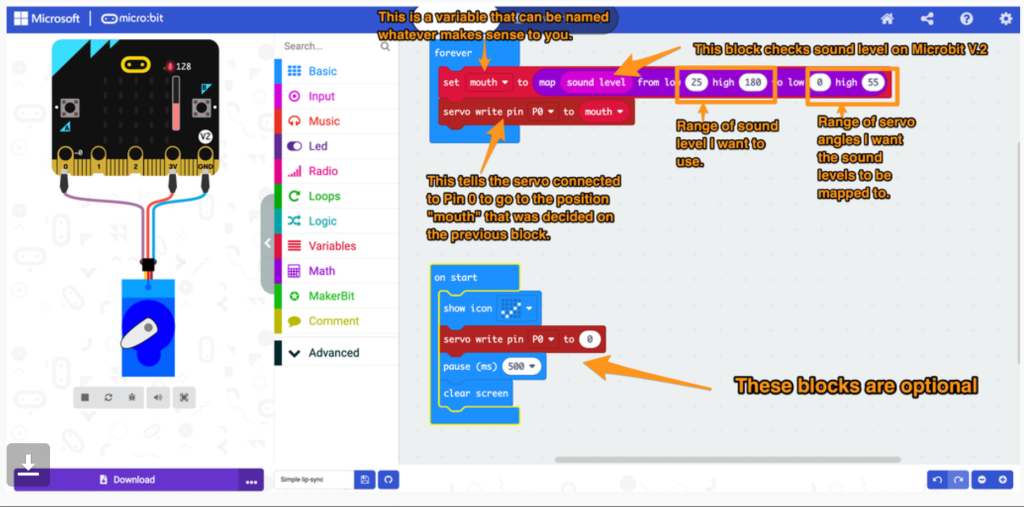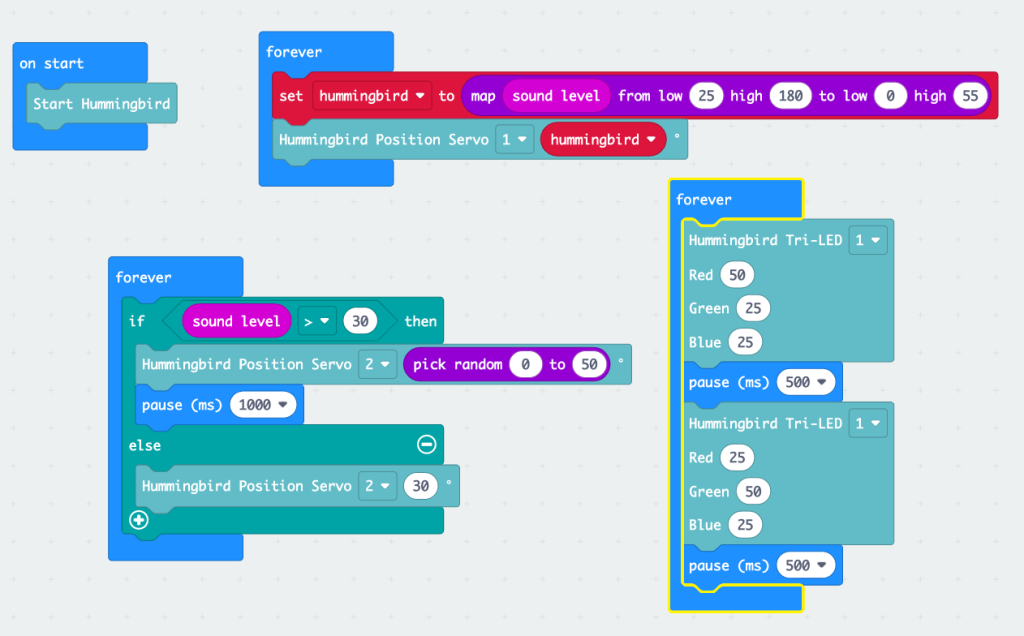Posts Tagged ‘makey makey’
Workshop: Using Makey Makeys and micro:bits Across the Curriculum
This is an overview of my workshop at FETC (Future of Technology Education Conference).
Description from the Conference Program
Workshop Slides
Wakelet of Workshop Resources
Monster Project Using Makey Makeys and Scratch
This project takes the Monster Project enhancing it with interactivity created through using Scratch and Makey Makeys. It was inspired by the Makey Makey Hack a Toy Lesson. Part of the lesson included the 5th graders interviewing 1st graders. This Edutopia article discussed the benefits of interviewing – Learning to Interview Builds a Range of Communication Skills.
Making the Monsters
A 1st grade teacher was asked to have her student draw monsters.

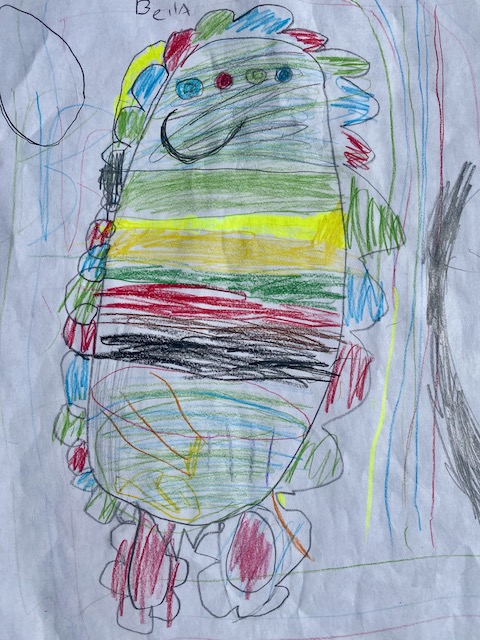
The 5th graders used felt to recreate the 1st graders’ drawing using felt. They were then sewn together with yarn and stuffed with filling.
Preparing the Plushy
The SAGE students created larger versions of the 1st graders’ drawn monsters through using felt pieces for the base and the features of the drawing, adding a back, sewing it today with yarn, and stuffing it
Interviewing the 1st Graders
The interview questions were developed by the SAGE students first by brainstorming ideas on the Promethean board, and second sharing them on a Google Doc so they each had a copy:
Interviews
The SAGE 5th graders interviewed the 1st graders about their Monsters using Vocaroo. It produces a MP3 file which is compatible with Scratch. This file is downloaded.
Preparing the Files in Scratch
The SAGE students then uploads their MP3 files into Scratch where it is edited into clips of sounds. This link gives some details how to do so https://helpkidscreate.com/adding-audio-to-scratch/.


See more of their code:
- Elizabeth – https://scratch.mit.edu/projects/793092586
- Tao – https://scratch.mit.edu/projects/811334666/
- Emily – https://scratch.mit.edu/projects/827406003
- Valerie – https://scratch.mit.edu/projects/796614386
- Emily (Spanish Version) – https://scratch.mit.edu/projects/830970807
After the 5th graders made the plushies, they prepared them to be connected to the Makey Makey by taping in conductive tape and sewing in conductive thread as described in https://makeymakey.com/blogs/how-to-instructions/maker-class-lesson-two-hack-a-toy


The Reveal to the 1st Graders
When all of the projects were complete, they were set up in our classroom and the 1st graders were brought in for the reveal.
Presenting Their Projects at Our Innovation Fair
Several SAGE students presented their Monster Projects at our district’s innovation fair.
Extra – Animated Drawings and Blabberize
As an extra project and to enable younger students to get more involved with the technology, the older students can help them animated their drawings using https://sketch.metademolab.com/:
which can then be uploaded to Canva to create a party of multiple monsters:
To learn how to do this, see the @theMerrillsEDU tutorial at https://youtu.be/JTukQCTj2fo?si=kdsM0vTyekRLFaRY
or Blabberize their monsters.
- http://blabberize.com/view/id/2165233
- http://blabberize.com/view/id/2165238?secret=f97ef182
- http://blabberize.com/view/id/2165250
- http://blabberize.com/view/id/2165249
- http://blabberize.com/view/id/2159218
Standards Addressed
CCSS – English Language Arts
- Interpret information presented in diverse media and formats (e.g., visually, quantitatively, orally) and explain how it contributes to a topic, text, or issue under study.
National Core Arts Standards
- Students will generate and conceptualize artistic ideas and work.
CSTA Standards
- Decompose (break down) problems into smaller, manageable subproblems to facilitate the program development process.
- Modify, remix, or incorporate portions of an existing program into one’s own work, to develop something new or add more advanced features.
ISTE Standards for Students
- Students create original works or responsibly repurpose or remix digital resources into new creations.
- Students publish or present content that customizes the message and medium for their intended audiences.
NAGC (National Association for Gifted Children) Standards
- Standard 1: Gifted individuals demonstrate skills, abilities, and potential commensurate with high performance.
- The project demonstrates the students’ advanced skills in creativity, problem-solving, and technical proficiency in programming and electronics.
- Standard 2: Gifted individuals demonstrate task commitment and perseverance to high-level work.
- The project showcases the students’ commitment and perseverance as they went through multiple stages, from creating stuffed animals to conducting interviews, programming, and connecting the Makey Makeys.
- Standard 3: Gifted individuals demonstrate creativity and risk-taking.
- The project involves the students’ creative thinking and risk-taking as they transformed the monster drawings into physical stuffed animals and integrated technology to make the interviews interactive.
- Standard 4: Gifted individuals demonstrate the ability to work both independently and within groups.
- The project required the students to collaborate within their group to complete different aspects, such as designing the stuffed animals, conducting interviews, programming in Scratch, and connecting the Makey Makeys.
- Standard 5: Gifted individuals demonstrate effective communication skills.
- The students exercised their communication skills during the interviews with the 1st graders and also used technology to convey their messages through the Scratch programming language and the Makey Makey connections.
- Standard 8: Gifted individuals demonstrate sensitivity to their own and others’ well-being.
- The project fostered empathy and awareness as the older students interacted with the 1st graders and translated their drawings into tangible stuffed animals, providing a sense of validation and pride for the younger children
Lip Syncing Characters Using micro:bits and Hummingbirds
I am quite fond of facilitating physical computing activities with my learners as I’ve discussed in Scratch and Makey Makey Across the Curriculum . For that post I created the following graphic to represent the benefits of physical computing. I think it is important to extend the use of coding microcontrollers into making physical objects for the following reasons:
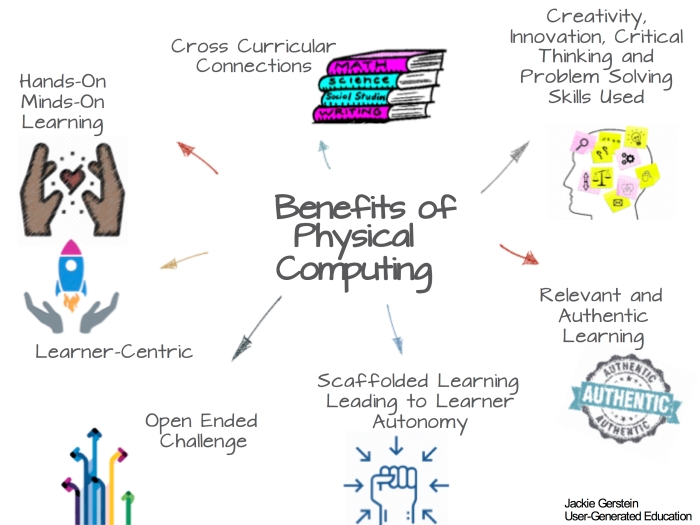
Lip Syncing Characters with a micro:bit and a Servo
I was excited to find Cecilia Hillway‘s (she’s so very talented!) Lip-Syncing Characters With Micro:bit – https://www.instructables.com/Lip-Syncing-Characters-With-Microbit/. Here is her video overview of her processes:
. . . and here are some examples of what my students did over the school year and what Cecilia’s kids did this summer:
Cecilia’s provided a Makecode graphic for the project:
I recreated this Makecode – https://makecode.microbit.org/_aRfexJ44aEpk
Lip Syncing Characters with a Hummingbird
A Hummingbird by Birdbrain is a kit of lights, sensors, and motors which allows students to create personally meaningful robots out of any materials. As part of her Instructables, Cecilia described her use of Hummingbird to add more features to the Lip Syncing Characters. It was a bit complicated for me so I used the kit to add a second servo to have her arm move and a flashing light to highlight my character’s name.
With the help of the folks from Codejoy, a Makecode was created for this project.
Here is the makecode – https://makecode.microbit.org/_1Ex1vYcqbF0r
